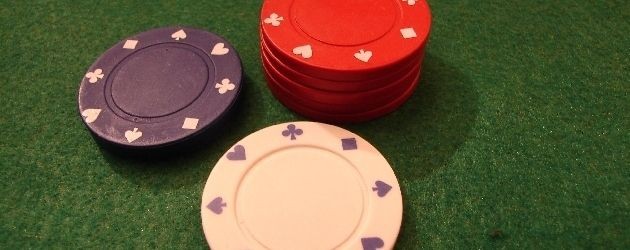Recommended Poker Room
In this poker strategy article you will learn that the Independent Chip Model (ICM) is a model to calculate the dollar value of tournament chips. It is important that you understand the difference between expected value in chips (cEV) and expected value in dollars ($EV) if you are playing poker tournaments such as Sit and Go’s, Double or Nothing’s or MTT’s.
Expected Value in Cash Games: $EV
In cash games, you always know exactly how much the chips in front of you are worth, since you are playing for real money dollars. If you win a pot of $25, then your wealth increases by $25. The calculation of the expected value in dollars ($EV) is also very simple. Imagine that you push all-in preflop with pocket aces and a stack of $50, and you get called by pocket kings. Since you have a probability of winning of 82% against KK, your $EV is 82% x $100 = $82.
Expected Value in Tournaments (SNG, DoN, MTT): cEV
In tournaments, you can calculate the expected value in chips using the same approach. For example, if you push all-in with AA and 1500 chips and get called by KK, your probability of winning is 82%. Therefore, the expected value of chips that you will win is 82% x 3,000 chips = 2,460 chips.
Expected Value in Dollar in Tournaments (SNG, DoN, MTT): $EV
So how much are these 2,460 chips worth in dollars? Now it starts getting interesting. There is no easy way to calculate how many dollars your tournament chips are worth.
Imagine that you win the above confrontation and that you double up to 3,000 chips in a 10+1$ Sit and Go. With 3,000 chips, you have twice as many chips as the remaining 8 opponents. A beginner would probably say that 3,000 chips are worth twice as much as 1,500 chips in a tournament, $20. However, this is not the case, as we can prove easily: Imaging that you win a SnG tournament and hold all of the chips (15,000 chips). And you get half of the prize money, $50. Therefore, even though you have 100% of the chips, you only get 50% of the money (because the players placed second and third geht the other 30% and 20%). This means that each chips has only half the value to you it had at the beginning of the tournament:
Beginning of tournament: 1,500 chips worth $10 -> 1,500 chips are worth $10
End of tournament: 15,000 chips worth 50$ -> 1,500 chips are worth only $5
Conversion from cEV to $EV with an ICM calculator
This means that the $EV and the cEV differ. To transform the value of your tournament chips into real money dollars, you need an ICM calculator, as the calculations are taking some time and are not very easy to be done. There are some Independent Chip Model calculators offered for free, this one here at holdemresources.net can even be accessed online in the web browser.
ICM calculation: Example
Let’s have a look at an example of an ICM calculation:
SB: 1500 chips (10% of all chips): Small Stack
BB: 7500 chips (50% of all chips): Big Stack
CO: 3000 chips (20% of all chips): Medium Stack
BTN: 3000 chips (20% of all chips): Medium Stack
Total chips: 15000; Blinds 100/200; pay-out 50/30/20
Entering the above figures into the ICM calculator, we get the following output for preflop equity (EQPre) = $EV:
SB: 14.17%
BB: 37.18%
CO: 24.33%
BTN: 24.33%
This means that the big stack with 50% of all chips has an equity of only 37.18%. In a SNG with 100$ prize money, his $EV is $37.18. In contrast to this, the small stack with only 10% of the chips has an equity of 14.17%.
Or let’s put it different: even though the big stack has 5 times more chips than the small stack (7,500 compared to 1,500 chips), he has only 2.6x as much equity (37.18 / 14.17).
Summary Introduction Independent Chip Model ICM
The Independent Chip Model helps us to convert tournament chips into real money. As we have seen, the more chips a player has, the less each chip is worth. Doubling the amount of chips does not double the dollar expected value ($EV). This is referred to as the diminishing marginal return and it is extremely important that you as a tournament player understand this: Each additional chip you win has less value than a chips you already had; and each chip you lose “hurts” you more than each chip you win benefits you.
This also means that while you can do coin-flips in cash-games, 50%-50% flips (and sometimes even 60% – 40% confrontations) in tournaments such as Sit and Go’s and Double or Nothing’s are -$EV: even though the cEV might be positive, the $EV is negative and you will lose money in the long run by risking your chips in such marginal situations.


 www.
www.